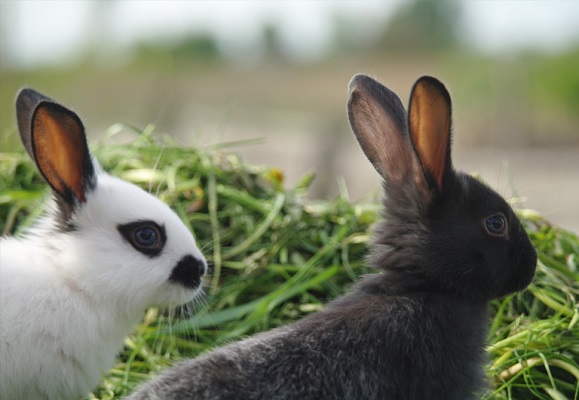

The nutritional requirement of rabbits, as is the case in other mammals, varies according to age and productive performance. To obtain effective feeding efficiency, diets should be formulated to meet the needs of animals of a particular age or stage of production. Most rabbit farms are not large enough to justify the use of several different feeds, so it is a common practice to use just one diet for the entire herd.
Since rabbit farming is becoming more intensive, it is suggested that rabbit producers should use at least two diets, a grower diet for fryers and a lactation diet for does.
(a) Nutrient Requirements for Growth Creep diets.
Creep diets are those diet which are fed to babies since requirements for growth are highest in them. This is decreased with increase of age. The baby rabbit is capable of a much greater growth rate as is commonly observed with this diet. In view of the high cost of creep diet, creep feeding does not appear to be an economically sound practice in rabbit production nowadays.
(b) Nutrition Requirement at Weaning
It is the period when an animal’s diet changes from milk to solid feeds. It is suggested that at weaning, a high-fibre, low-starch diet would be beneficial, followed by a switch two weeks later to a high-starch diet; at which time the capacity of the animal to digest starch would be higher. For maximum production efficiency, a feeding system using a highly palatable, high-fibre diet at weaning with a switch to a high carbohydrate fattening ratio would be beneficial.
(c) Requirement of Diets at Gestation/Lactation
Lactating does have a higher requirement for protein, energy, calcium and phosphorus than do fryers. For maximum production at least 18% CP is required. Since, does in commercial leads are simultaneously pregnant and lactating, the same diet can be used for both gestation and lactation. During periods when does are not with litters, restricted feeding should be practiced to avoid obesity. Peak lactation in rabbits occur 21 days post kidding. In does bred 24 – 48 hours postpartum, milk production declines rapidly after 21 days of lactation, and the mammary glands prepare for the initiation of a new lactation period.
(d) Complementary Diets
In certain situations, particularly in small-scale rabbit production, it would be desirable to free feed hay or greens and supplement this diet with a restricted quantity of high energy, high protein concentrate
 Contact Jaguza Support
Contact Jaguza Support